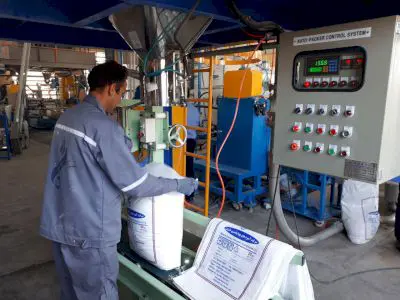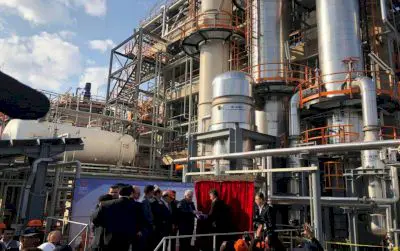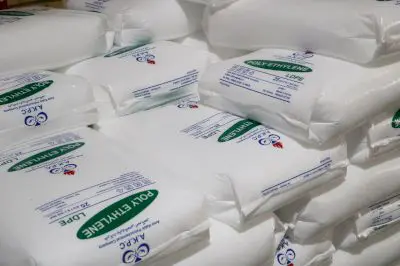Petrochemicals Prices in Armenia
Armenia is a powerful country in terms of industry and income. The Middle East is one of the most important hubs in the petrochemical industry. Armenia's most important trading partners in terms of exports are Russia, Switzerland, Bulgaria, Iraq, the Netherlands, China (4.50%) and Iran. production of polymers and granules in our petrochemical is very important
Add your import and export orders to this list
Warning: Undefined variable $formTitle in /home/anbar/domains/anbar.asia/anbar/inc/html/desktop/orderform.php on line 10
Warning: Undefined variable $marketName in /home/anbar/domains/anbar.asia/anbar/inc/html/desktop/orderform.php on line 12
Warning: Undefined variable $location in /home/anbar/domains/anbar.asia/anbar/inc/html/desktop/orderform.php on line 12
If you want to trade in the , please join in Anbar Asia. Your order will be shown here, so the traders of contact you

Armenia in industry, tourism, services, agriculture experienced great prosperity. our petrochemical industry has many phases of production of crude oil products. Iran plays a more active role in Armenia's imports. Petrochemicals are chemical products from the processing of oil and gas
- Armenia Acrylonitrile Butadiene Styrene Market
- Armenia resin Market
- Armenia Polybutadiene Market
- Armenia Nylon Market
- Armenia Styrene Butadiene Rubber Market
- Armenia Ethylene Market
- Armenia Polypropylene Market

Therefore, with a closer look at this issue, it can be understood that the production of polymers and granules in our petrochemical is very important. Currently, the largest imports of petrochemical industries are in the form of granules, because these products are not found naturally and must be produced.
Read More ...
In 1795, ethylene gas was called olefin gas. The first synthesis of ethylene gas compounds (dichlor and ethane) was performed in 1795 by a Dutch chemist. In the middle of the 19th century, because C2H4 had a lower hydrogen than C2H5 ethyl, suffixes (ene) of Greek origin were added to the end of ethyl, and after that olefin gas is called ethylene gas.
Read More ...
The PBR rubber polybutadiene compound is a synthetic rubber. Polybutadiene rubber is a polymeric compound that is formed from the polymerization reaction of units 1 and 3 of butadiene. PBR is the fourth most widely used chemical in the world in 2012.
Read More ...
Polypropylene has been able to replace engineering polymers and even metal parts in industrial applications due to its easy acceptance of high amounts of various fillers and reinforcements, and as a result, a wide market has been opened for it. In addition, alloying with other polymers has diversified the grades and applications of this polymer. polypropylene is used in:
Read More ...
SBR and natural rubber are generally similar. However, some properties of styrene butadiene rubber have made natural rubber perform better than it. Some of these properties include the lower resistance of this polymeric material to tensile, heat accumulation and waste generation.
Read More ...
Due to its mountainous texture, Armenia has long been a place for the extraction of various minerals. For this reason, different types of mines are active in it. The most important of these mines in Armenia are gold, iron, copper, salt and some other minerals.
Read More ... Following the collapse of the Soviet Union, much of Armenia's chemical sector was laid waste. IN THE former Soviet Union, Armenia was the chemical powerhouse of the Caucasus. The collapse of the USSR began a chain of events that dealt Armenia's chemical industry a series of blows. Is 2009 the time for things to finally kick off? According to the Interfax Centre for Economic Analysis, Armenia has the capability to produce a great range of chemical products, including plastics, rubber, latex, asbestos products, acids, oxides, salts, paint materials, perfumes, cosmetics, polymers, resins, agricultural chemicals and fertilizers and household chemicals, as well as chemical elements and compounds. Over the past eight years, Armenia jumped a staggering 56 places up the Index of Economic Freedom (a series of 10 economic measurements created by the Heritage Foundation and Wall Street Journal) , and in 2008 stood in 28th place, making it the most economically free country in the Caucasus (Georgia was 32nd, Azerbaijan 107th, and Russia 134th. During those years, foreign investment in the Armenian chemical industry has risen, with interest being shown from countries such as Iran, Great Britain, the US, and Switzerland. The communications and mining sectors attract the most investment from abroad (Armenia has extensive reserves of copper, gold, and precious stones), but within the chemical industry the pharmaceutical sector seems to have become the most prominent on the domestic market, where manufacturers such as Iran's Arpimed and Switzerland's AZAD Fine Chemicals. The "Nairit Plant" is the largest chemical production facility in Armenia, where carbinol syrup, caustic soda, liquid chlorine, and monocarboxylic acids are manufactured. Traditionally, Armenia's greatest chemical export has been chloroprene rubber (used in the manufacture of tires). While producing many of these chemicals for export, Armenia still remains a net importer of chemicals. That ratio has improved over the past ten years, but Armenia still remains a potentially attractive market for European exporters. Armenia has a lot to offer the chemical industry, such as a benign economic environment, skilled workforce, and competitive cost base. Armenia's infrastructure is in dire need of repair. However, a certain amount of progress is being made on certain routes, for example because of the lack of restrictions on remittances from the large expatriot Armenian community abroad. Armenia is completely reliant on other countries for oil and gas. Therefore, Armenia is almost completely dependent on imported energy. Armenia's capacity into the early part of this decade was flat, and much of the equipment still used in these plants is outdated. However, recent privatization in the energy sector has led to greater investment to update and safely guarantee Armenia's energy supplies. Armenia is a landlocked country, sandwiched between Georgia in the north, Turkey to the west, Azerbaijan in the east, and Iran to the south. Many Armenian imports from the Black Sea area have to come through Georgia. When the tension that exists between Georgia and Russia occasionally erupts, this can have knock-on effects: Russian exports destined for Armenia, waiting to be shipped through Georgia, can be halted while hostility remains, and trade stops. Unlike its northern neighbor, Armenia's relations with Russia are positive (Russia provided 32. 5% of foreign investment in 2007, the single largest investor), and during times of conflict the Armenian public has displayed irritation at Georgia's diplomacy with Russia, which it deems unnecessarily Following Armenia's war with Azerbaijan over both Turkey and Azerbaijan closed their borders, which remain closed to this day. Armenia would also be able to export its mineral fertilizers into the rural areas of eastern Turkey. It would enable an oil pipeline to be built from Baku, the capital of Azerbaijan, directly through Armenia into Turkey and beyond - a pipeline that bypasses Russia. "Armenia's chemical processing capabilities are more advanced than those in Azerbaijan. If the border were opened, Azeri oil companies could then pipe crude over the border for Armenia to refine. Unfortunately, neither Turkey nor Azerbaijan will consider reopening borders until Armenia relinquishes its claims over sovereignty. Relations between Armenia and Turkey are also becoming increasingly strained as a result of the lobby among the diaspora there calling for Turkey to recognize the mass slaughter of Armenians in 1915 in the Ottoman Empire as genocide. On a more positive note, however, the Turkish president's invitation and attendance at a football match in Yerevan last September are encouraging. Also, meetings between the presidents of Armenia and Azerbaijan, Serzh Sargsyan and Ilham Aliev, in St. As the Armenian proverb says, "If the village stands, it can break a trunk," meaning "strength increases in unity. "Looking at where Armenia is, it is a gateway to the Middle East, and an inland link from the Black Sea to the Caspian. In 2007 he worked in Yerevan, Armenia, at the Noyan Tapan news agency.
Read More ...
This market research report examines the foreign trade of Armenia and its perspectives on the global market for oleic acid. The report will be of considerable interest primarily to relevant strategic planners, senior company officials and since it features invaluable information on oleic acid export/import operations in Armenia. The report studies how Armenia behaves on the global market for oleic acid. The report indicates major suppliers and consumers of oleic acid in Armenia. RESUME: ARMENIA TRADE OF OLEIC ACID. Armenia share in world trade of oleic acid 1. Trends in Armenia exports and import of oleic acid (2009-2019). ARMENIA EXPORTS OF OLEIC ACID. Key consumers of oleic acid from Armenia 2. Armenia exports of oleic acid, segmented by region and country. ARMENIA IMPORTS OF OLEIC ACID. Major suppliers of oleic acid for Armenia 3. Armenia imports of oleic acid, segmented by region and country. OLEIC ACID IN ARMENIA: INTERNATIONAL TRADE PROSPECTS FOR 2020-2024. Armenia share in global exports of oleic acidTable 2. Armenia share in global imports of oleic acidTable 3. Trends in Armenia exports and imports of oleic acid 4. Key consumers of oleic acid from Armenia 5. Armenia exports of oleic acid, segmented by country (2018)Table 6. Armenia exports of oleic acid, segmented by country (2019)Table 7. Major suppliers of oleic acid for Armenia 8. Armenia imports of oleic acid, segmented by country (2018)Table 9. Armenia imports of oleic acid, segmented by country (2019)Table 10. Armenia trade prospects for 2020-2024: trade value, $Table 11. Armenia trade prospects for 2020-2024: net weight, kgTable 12. Armenia trade prospects for 2020-2024: average price, $/ton.
Read More ...
[232 Slides Report] The Top 15 Petrochemicals Market report is segmented into three sub parts, basic basic intermediate chemicals and basic polymers. The basic petrochemicals market is anticipated to grow from 250. In this study, 2014 has been considered as the historical year, 2015 as the base year, and 2016–2021 as the forecast period for estimating the market size of Extensive secondary sources, directories, and databases such as Hoovers, Bloomberg, Chemical Weekly, Factiva, International Monetary Fund (IMF), World bank, Economic Co-operation and Development (OECD), International Energy Agency (IEA), Securities and Exchange Commission (SEC), and other government and private websites are involved to identify and collect information useful for this technical, and commercial study of the top 15 petrochemicals market. Petrochemicals are derived from various feedstocks, viz ethane, gas oil, methanol, & naphtha. It categorizes the global market for petrochemicals on the basis of the following segments:. The top 15 petrochemicals report is divided into three sub parts, basic basic intermediate chemicals and basic polymers. The basic petrochemicals market is projected to grow from 250. Moreover, rise in construction projects in these regions related to affordable housing is further expected to boost the demand of Also, the growth in end-use industries such as automotive, packaging, electronics & electricals globally are driving the petrochemicals market. The segmentation of the top 15 petrochemicals includes basic petrochemicals (ethylene, propylene, butadiene, benzene, xylenes & toluene), intermediate chemicals (methanol, ethylene oxide, propylene oxide), and basic polymers (polyethylene, polypropylene, polystyrene, polyester, polyvinyl chloride and acrylonitrile butadiene styrene). Methanol is projected to be another market among the top petrochemicals driven by rise in demand of formaldehyde, which is used to manufacture adhesives for construction board products along with increase in gasoline fuel blending application. Currently, Asia-Pacific is the largest market for the petrochemicals having accounted for more than half of the global market size, by volume, in 2016. High economic growth rate, rising demand for construction products made up of plastics, growing health awareness applications, improving standards of living and competitive manufacturing costs are the main factors leading to the growth of the market for petrochemicals in this region. Though the petrochemicals market is growing at a significant growth rate, few factors hinder the growth of the market globally. ), Lyondell Basell (The Netherlands) are the dominant market players in the global petrochemicals market. 2 Top 15 Petrochemicals Market 2. 1 Executive Summary- Basic Petrochemicals 3. 1 Global Petrochemicals Feedstock 4. 5 Basic Petrochemicals 5. Figure 1 Top 15 Market Segmentation (Each Product has Been Segmented By Region & 2 Years Considered for the StudyFigure 3 Top 15 Petrochemicals Market: Research DesignFigure 4 Research Methodology: Top-Down 5 Research Methodology: Bottom-Up 6 Polyethylene Projected to Dominate Ethylene Market, By Application, 7 Polypropylene Projected to Dominate Propylene Market, By Application, 8 Polybutadiene Application Projected to Grow Fastest During Forecast Period, 9 Methanol to Olefin (MTO) Application Projected to Grow Fastest During Forecast Period, 10 Top 2 Petrochemicals Market, By RegionFigure 11 PET is Projected to Become the Fastest Growing Market Among Polymers 12 Naphtha is Projected to Dominate the Feedstock MarketFigure 13 Products of Ethane & Naphtha 14 Middle East & Africa’s Feedtsock Consumption is Expected to Grow Slightly Higher, (2016-2021) Figure 15 Ethane’s Share is Projected to Grow at A Significant RateFigure 16 Napththa is Projected to Dominate the Feedtsock Market for A Long TermFigure 17 Naphtha Projected to Dominate the Feedtsock Market in Eastern EuropeFigure 18 LPG is Projected to Dominate the Feedstock Market in Middle East in Long TermFigure 19 Methanol’ Share is Projected to Dominate the Feedstock Market in Long TermFigure 20 Ethylene Value ChainFigure 21 Ethylene Capacity Addition, By Region (2014-2016), (MMT)Figure 22 Ethylene Market Share, By Region (2016-2021), MMTFigure 23 Ethylene Market Share, By Application (2016-2021), MMTFigure 24 Ethylene Market, Drivers, Restraints, Opportunities and 25 Propylene Value ChainFigure 26 Propylene Capacity Addition, By Region (2014-2016), (MMTFigure 27 Propylene Market Share, By Region (2016-2021), MMTFigure 28 Propylene Market Share, By Application (2016-2021), MMTFigure 29 Propylene Market, Drivers, Restraints, Opportunities and 30 Butadiene Value ChainFigure 31 Butadiene Capacity Addition, By Region (2014-2016), (KT)Figure 32 Butadiene Market Share, By Region (2016-2021), KTFigure 33 Butadiene Market Share, By Application (2016-2021), KTFigure 34 Butadiene Market, Drivers, Restraints, Opportunities and 35 Benzene Value ChainFigure 36 Benzene Capacity Addition, By Region (2014-2016), (KT)Figure 37 Benzene Market Share, By Region (2016-2021), KTFigure 38 Benzene Market Share, By Application (2016-2021), KTFigure 39 Benzene Market, Drivers, Restraints, Opportunities and 40 Toluene Value ChainFigure 41 Toluene Capacity Addition, By Region (2014-2016), (KT)Figure 42 Toluene Market Share, By Region (2016-2021), KTFigure 43 Toluene Market Share, By Application (2016-2021), KTFigure 44 Toulene Market, Drivers, Restraints, Opportunities and 45 Xylene Value ChainFigure 46 Xylenes Capacity Addition, By Region (2014-2016), (KT)Figure 47 Xylenes Market Share, By Region (2016-2021), KTFigure 48 Xylenes Market Share, By Application (2016-2021), KTFigure 49 Xylenes Market, Drivers, Restraints, Opportunities and 50 Methanol Value ChainFigure 51 Methanol Market Share, By Region (2016-2021), KTFigure 52 Methanol Market Share, By Application (2016-2021), KTFigure 53 Methanol Market, Drivers, Restraints, Opportunities and 54 Ethylene Oxide Value ChainFigure 55 Ethylene Oxide Market Share, By Region (2016-2021), KTFigure 56 Ethylene Oxide Market Share, By Application (2016-2021), KTFigure 57 Ethylene Oxide Market, Drivers, Restraints, Opportunities and 58 Propylene Oxide Value ChainFigure 59 Propylene Oxide Market Share, By Region (2016-2021), KTFigure 60 Propylene Oxide Market Share, By Application (2016-2021), KTFigure 61 Propylene Oxide Market, Drivers, Restraints, Opportunities and 62 Polyethylene Value ChainFigure 63 Polyethylene Market Share, By Region (2016-2021), KTFigure 64 Polyethylene Market Share, By Application (2016-2021), KTFigure 65 Polyethylene Market, Drivers, Restraints, Opportunities and 66 Polypropylene Value ChainFigure 67 Polypropylene Market Share, By Region (2016-2021), KTFigure 68 Polypropylene Market Share, By Application (2016-2021), KTFigure 69 Polypropylene Market, Drivers, Restraints, Opportunities and 70 PET Value ChainFigure 71 PET Market Share, By Region (2016-2021), KTFigure 72 PET Market Share, By Application (2016-2021), KTFigure 73 PET Market, Drivers, Restraints, Opportunities and 74 PVC Value ChainFigure 75 PVC Market Share, By Region (2016-2021), KTFigure 76 PVC Market Share, By Application (2016-2021), KTFigure 77 PVC Market, Drivers, Restraints, Opportunities and 78 Polystyrene (PS) Value ChainFigure 79 Polystyrene Market Share, By Region (2016-2021), KTFigure 80 Polystyrene Market Share, By Application (2016-2021), KTFigure 81 Polystyrene Market, Drivers, Restraints, Opportunities and 82 ABS Value ChainFigure 83 ABS Market Share, By Region (2016-2021), KTFigure 84 ABS Market Share, By Application (2016-2021), KTFigure 85 ABS Market, Drivers, Restraints, Opportunities and Challenges. Benchmarking the rapid strategy shifts of the Top 100 companies in the Top 15 Petrochemicals Market.
Read More ...
Dataintelo published a new report titled Market research report which is segmented by Types (Ethylene, Propylene, Benzene, Butadiene, Xylenes, Toluene), By Applications (Construction, Packaging, Automotive, Electrical & Electronics, Aerospace, Consumer Goods, Others), By BASF, Total, Royal Dutch Shell, Sinopec, DowDupont, Reliance Industries, Sabic, British Petroleum, Chevron Phillips, Formosa Plastics, China National Petroluem Corporation, Exxonmobil, Ineos”. Petrochemicals Market research report delivers a close watch on leading competitors with strategic analysis, micro and macro market trend and scenarios, pricing analysis and a holistic overview of the market situations in the forecast period. We have studied the Petrochemicals Market in 360 degrees via. Reasons to Purchase the Petrochemicals Market Report:.
https://marketpublishers.com/report/industry/chemicals_petrochemicals/armenia_trade_market_research_of_oleic_acid_bac.htmlhttps://www.icis.com/explore/resources/news/2009/02/16/9193135/armenia-shows-potential-for-chemicals-industry/
https://www.lucintel.com/basic-petrochemicals-market-2018.aspx

